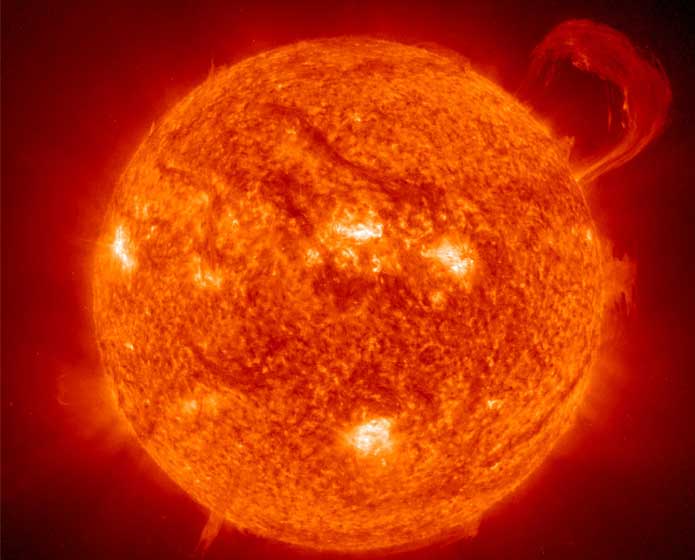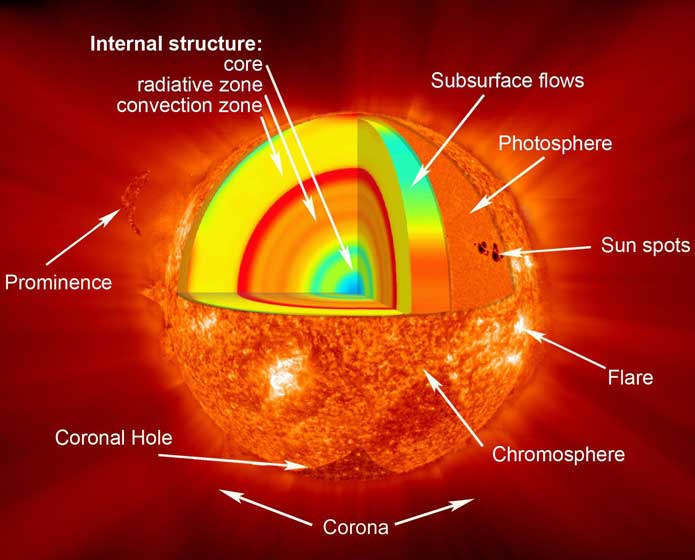The sun is the one and only star in our solar system. We know there are other stars out there, but they are only distant specks of light in a clear night sky. Without our sun, there is no life on Earth. All of the energy-providing life that we need is provided by our fun. Find out scientific and interesting facts about our sun.

The sun provides more energy in the form of sunlight to the Earth each day than people use.
Interesting Facts About the Sun
- Our sun, the center of our 8 planet solar system, is a star.
- The sun provides a majority of the heat for the planets (some planets produce internal heat).
- The future looks bright. Scientists estimate that the amount of energy received by the sun in only 20 days would equal the total amount of energy stored in fossil fuels (oil, coal, natural gas, etc) on earth.
- Our sun is an average size sun.
- The mass of our sun makes up almost all of the mass in our solar system. The sun's total mass is 99.8 percent of the total mass of our solar system
- Our sun is a yellow star and has a temperature of approximately 10,000 degrees Farenheit (5500 degrees Celcius) at the surface.
- Our sun has a medium size and medium temperature compared to other stars in the universe.
- Scientists estimate that the temperature of the center of the sun is approximately 15 million degrees Celsius.
- Looking at the sun directly can damage your eyes.
- When the sun is veried with a special telescope (to protect the viewer's eyesight), darker spots are visible on the sun's surface. Scientists have taken thermal images of the sun and the dark spots are actually cooler than the normal surface temperature on the sun.
- Solar flares are common on the sun. Solar flares are storms on the surface of the sun.
- The sun is not a solid mass. Some portions of the sun are plasma and gas. Different parts of the sun rotate at different rates.
- The distance from the Earth to the sun is 93 million miles (150 million kilometers).
- The diameter of the sun is 864,000 miles (1,390,000 kilometers)
- Scientists think that over 70 percent of the sun consists of the element hydrogen. The second most abundant element on the sun is helium.
- If you could stand on the sun, gravity nearly crush you. Gravity is almost 28 times greater on the sun than on earth because of the sun's huge mass. A one-hundred pound person would feel like they weigh 2800 pounds on the sun.
- The sun makes its heat in a process called nuclear fusion. The sun is burning hydrogen and converting it into helium.


